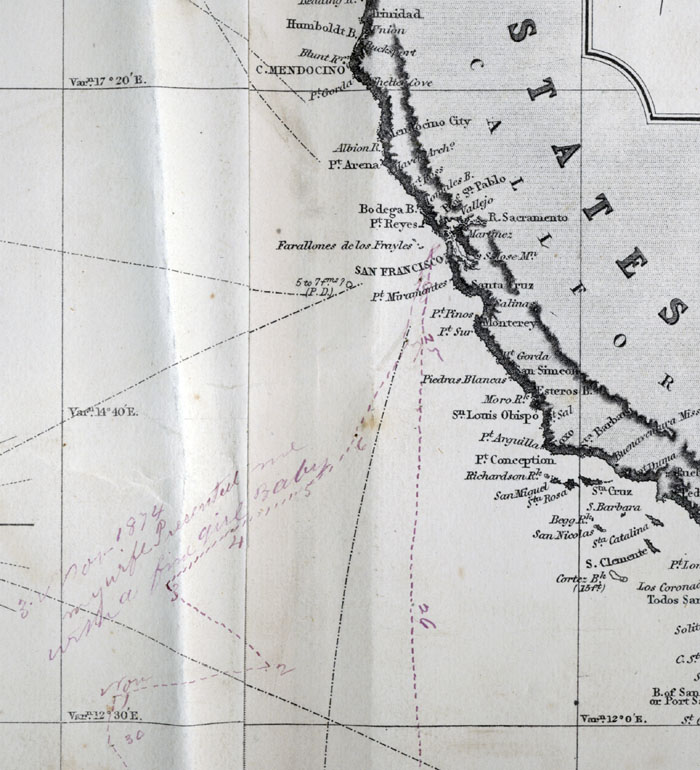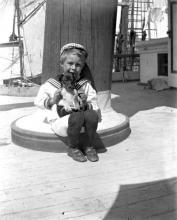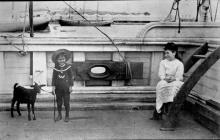Families at Sea: Children
During the nineteenth century, at least 60 children from Searsport were born at sea. Some ships had a midwifeMidwife
In the past, a woman trained to deliver babies; now a nursing specialty requiring advanced education. aboard, but often the captain had to help deliver the infant. Captain William H. Blanchard served as midwife for three of his and his wife Clara’s children. This chart detail shows where the daughter of Captain Phineas Griffin of Searsport was born in the North Pacific Ocean, November 4, 1874.
Growing up at sea was both exciting and boring. Being at sea on a glorious day was wonderful, as was visiting far away ports and countries. On the other hand, children were not allowed to wander around the ship, and typically could not leave the quarterdeckQuarterdeck
The term applied to the afterpart of the upper deck. Generally, term used to indicate the portion of the upper deck extending from the mainmast to the stern, as far aft as the poop if there is one.. During storms, they had to stay inside the cabin, where, if conditions were very bad, the glass portholesPorthole
The circular opening in the side of a vessel to give light and ventilation to living quarters. Also called side light, sidescuttle, or air port. were covered.
Children read books, played games, did lessons, and attended to their pets. Dogs were popular on shipboard, but children also took care of birds, goats, sheep, and chickens, and one family even had a Himalayan pony. Some captains built swings, and one built an eight-foot toy sailboat on deck for his children.
Though children could not go to school while at sea, their mother or father taught them. Children growing up at sea had real-life opportunities to learn about geography, history, mathematics, business, and science.



